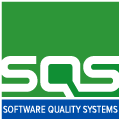Given the significant amounts of software developed in the last decade, coupled with the constant pressure in companies to reduce costs, the automation of software testing processes becomes increasingly necessary.
Software testing, or simply testing as we will refer to it from now on, is an essential element in any organization that seeks not only quality in its development processes but also the trust of its clients. Therefore, let’s explore when we can implement this automation and how to incorporate it into our daily work.
PRIORITIZING AUTOMATION
First, we must establish a clear premise: we cannot automate all work. Therefore, we must choose adequately and establish our priorities.
We must analyze our projects and, based on this analysis, choose which ones require automation, which will save us time and financial costs in the medium and long term. We must consider the type of tests we want to perform (unit, regression, etc.) as well as the techniques we will use, since this will determine the factors to consider when deciding whether to automate testing.
COMPLEMENTING MANUAL TESTING
It is also important to note that we will not eliminate manual testing from our process. Instead, part of the testing work will be performed automatically, helping us to better organize our work.
CHALLENGES IN IMPLEMENTING AUTOMATION
Some of the problems we will encounter when implementing testing automation in our organization include:
- Lack of prior QA work
- Non-existent or insufficient project documentation
- Limited budget for QA
- Tight time constraints for QA
- Inadequate vision of automation
METHODOLOGY AND TOOLS
When executing our software projects and automating the testing to be performed, we must also consider two other important factors: methodology and tools.
In recent years, there has been a trend towards incorporating agile methodologies and establishing a DevOps philosophy in our developments. Additionally, there is a tendency to incorporate CI/CD practices. Regarding tools, another trend is the use of automation tools that do not require code or scripting.
OVERCOMING TECHNICAL BARRIERS
Approaching these automation processes generally requires prior experience in certain programming languages and/or environments. If our organization lacks this expertise, it will require an additional financial and temporal cost, which can disproportionately increase the time and cost of our project. Additionally, this code requires documentation and maintenance over time.
NO-CODE PLATFORMS AND APPLICATIONS
As a solution to all this, a series of platforms and applications have emerged that allow us to perform automation tests without prior knowledge of programming or any specific technology. This way, we can:
- Create scripts automatically without the need for prior programming knowledge
- Reduce the time spent creating tests
It is important to note that, just as automated testing does not completely replace manual testing, these tools do not replace current testing methods that use scripts for testing. They also present challenges such as a steep initial learning curve, which can require a significant upfront effort to fully utilize the selected tool.
Ultimately, there is no silver bullet for testing. We must always first analyze both our project and our needs when approaching it. This analysis will reveal the factors to consider for effectively implementing our project.








